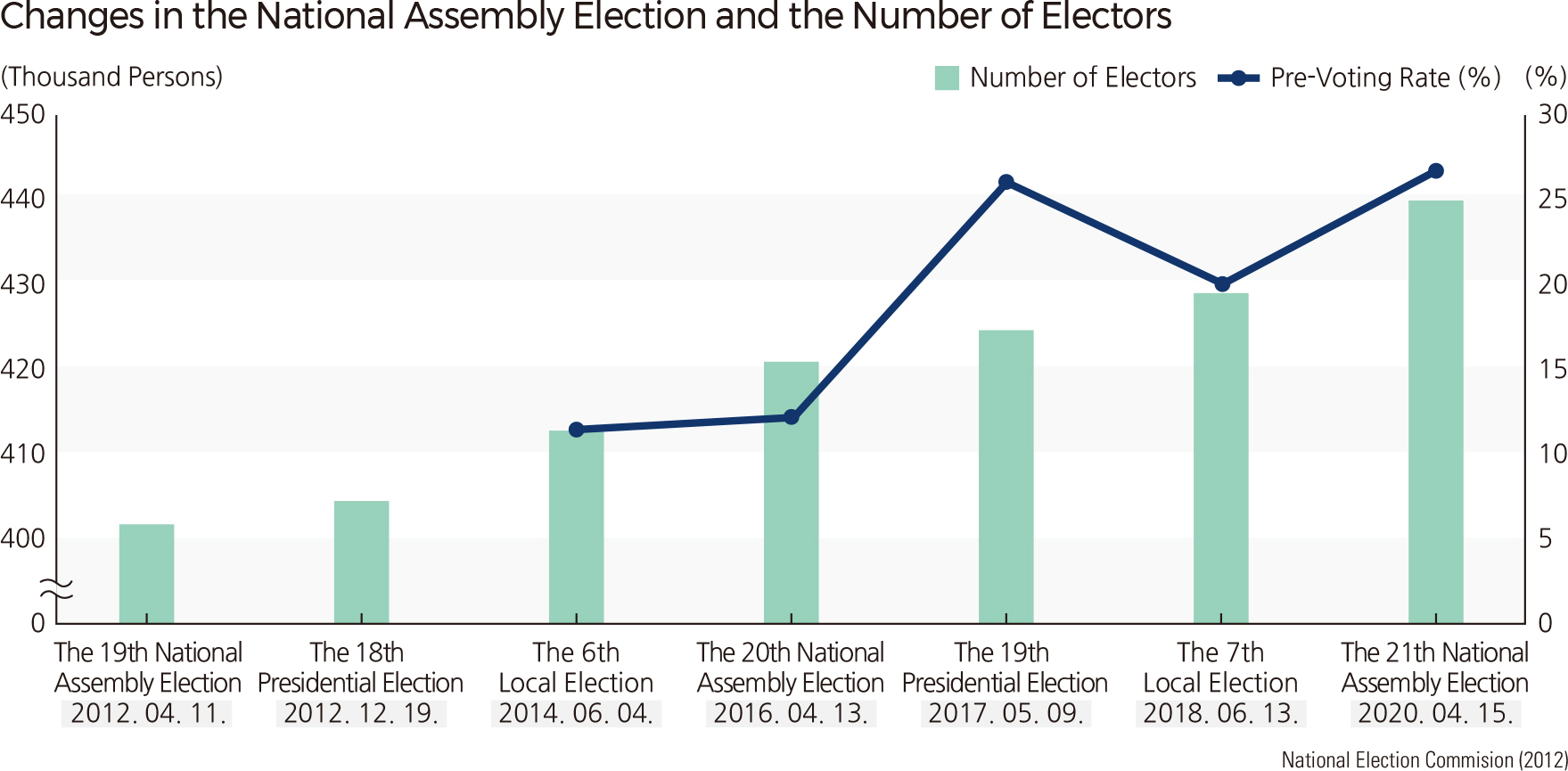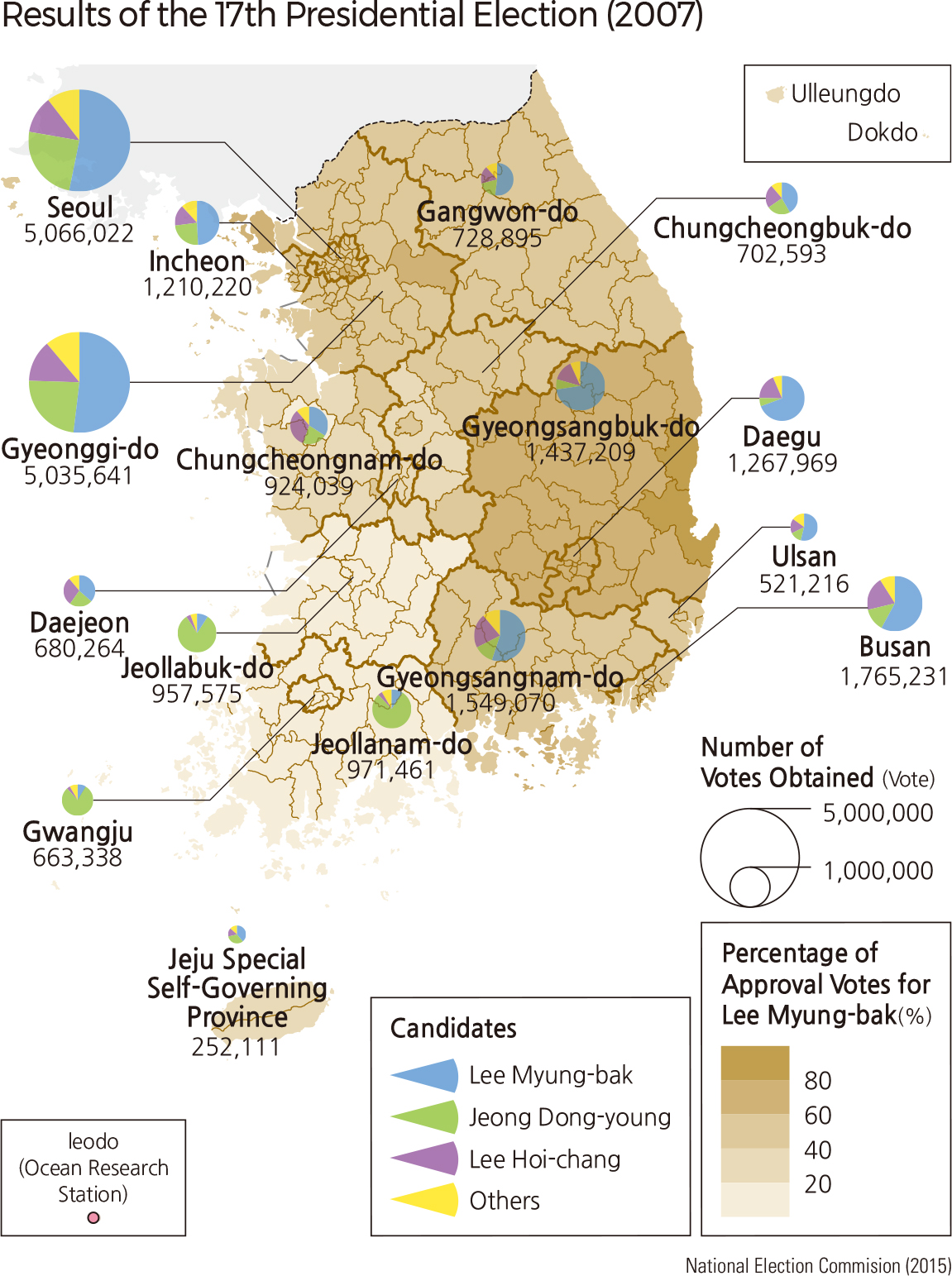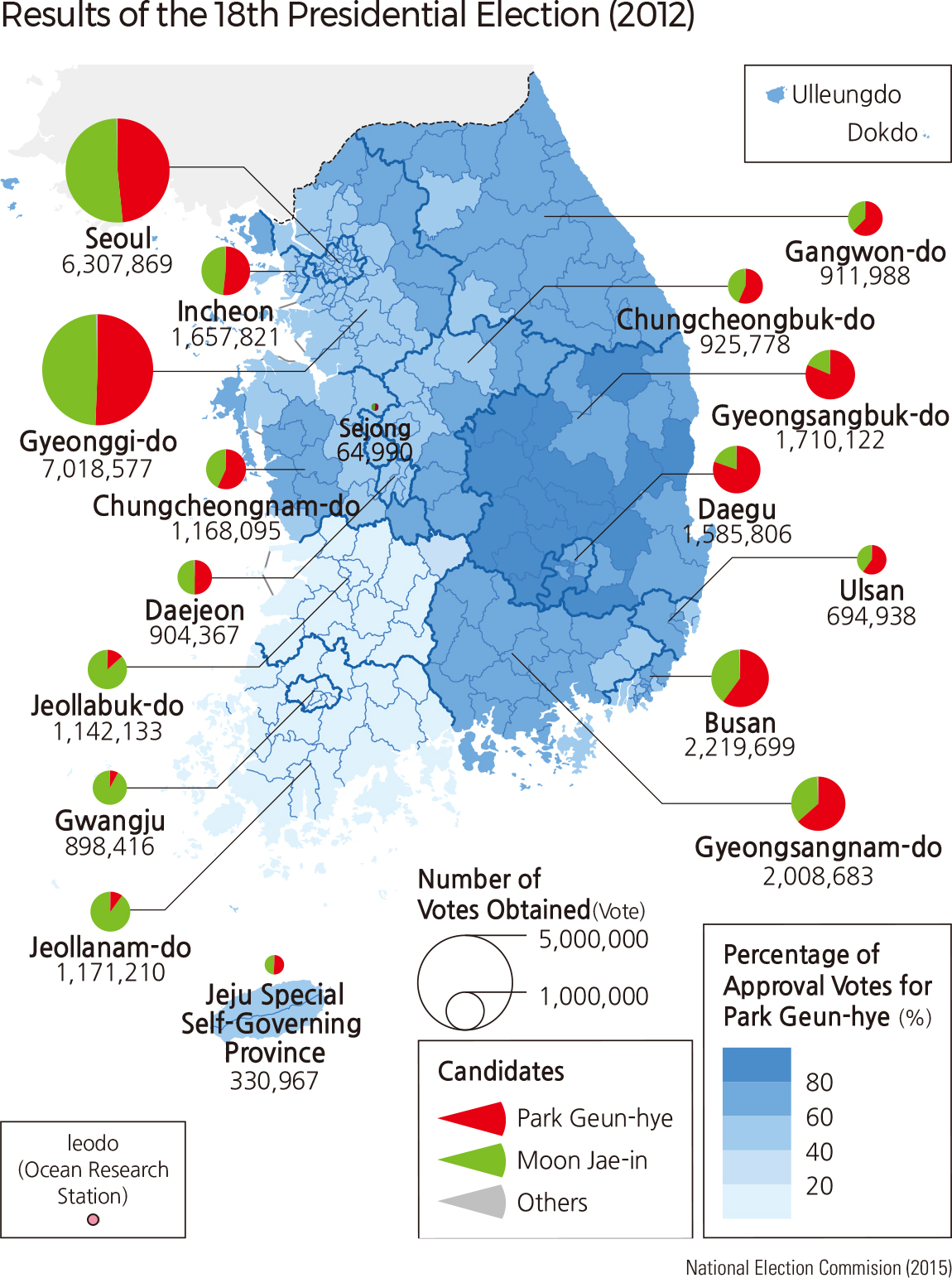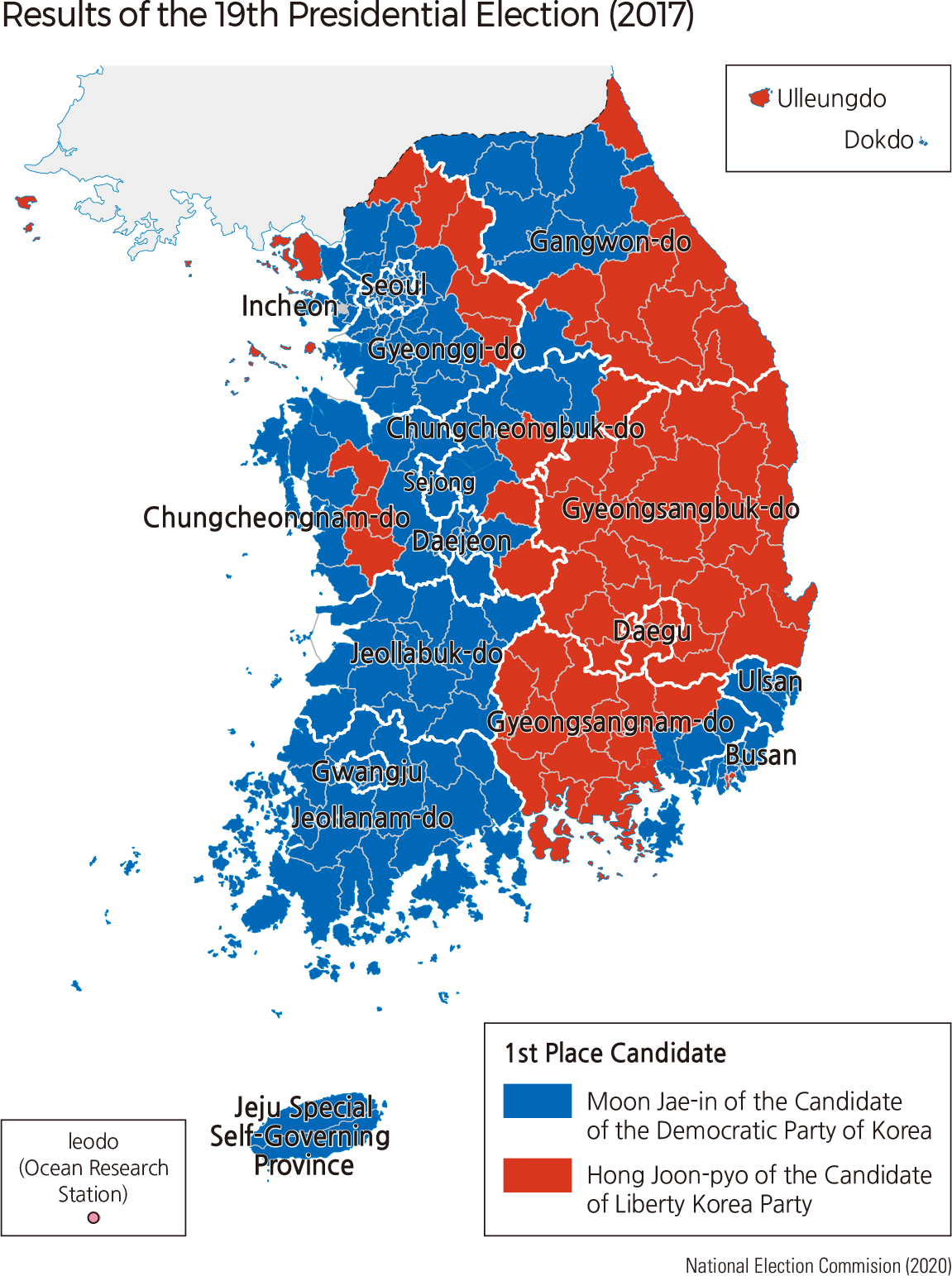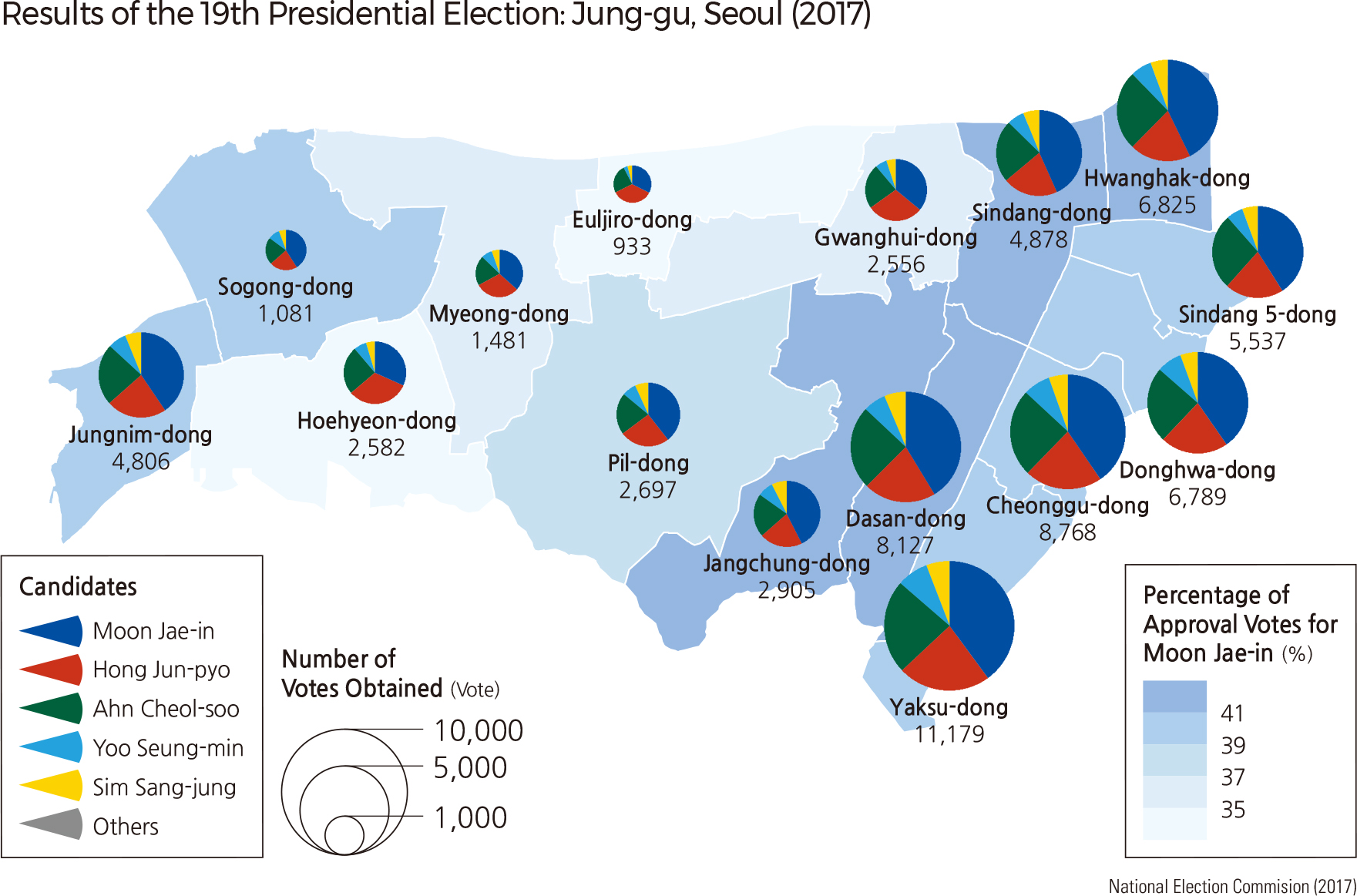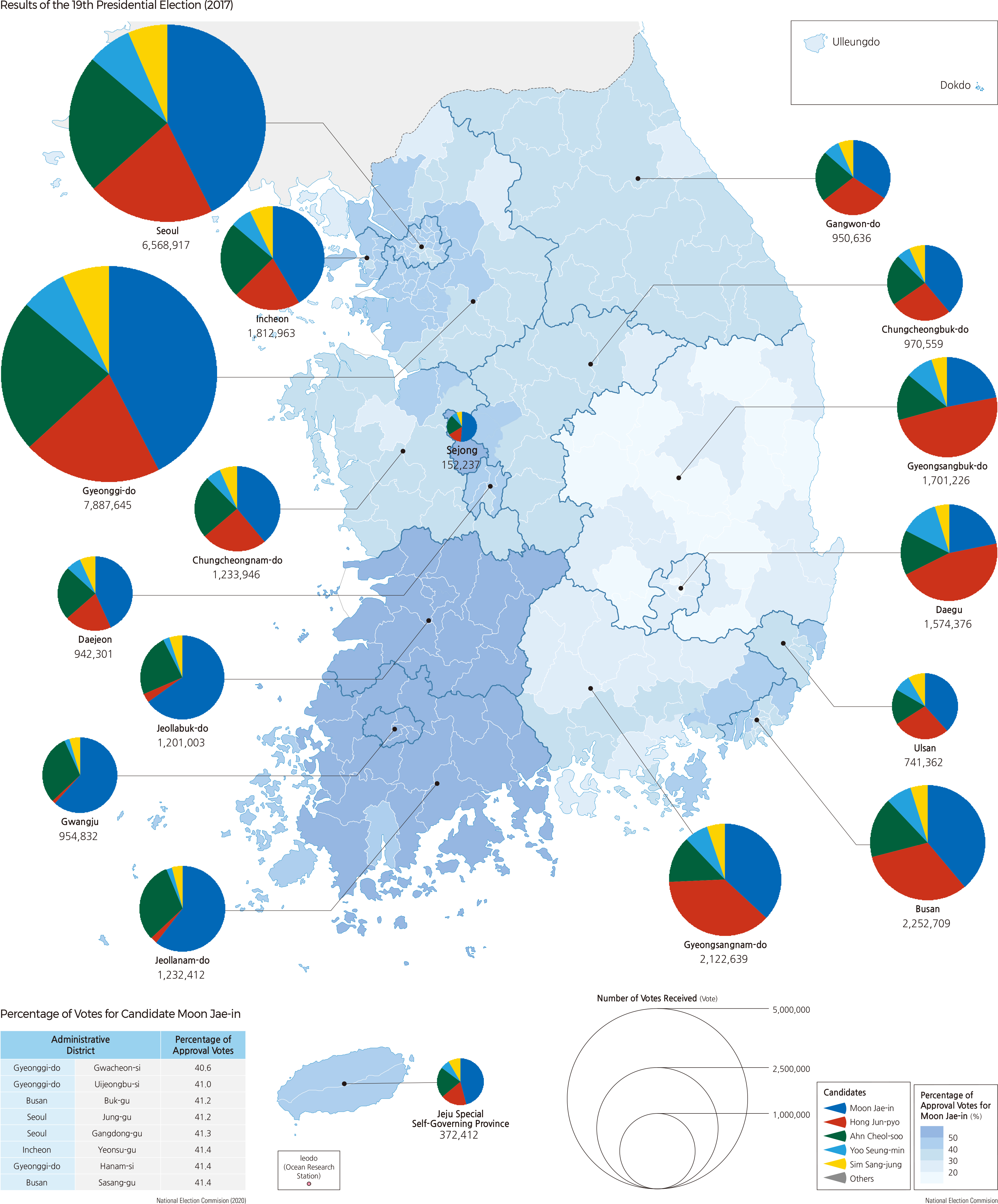English III 2021
Democracy is regarded as the greatest achievement of the Republic of Korea (ROK), along with the rapid economic growth in what is dubbed “the miracle on the Han River.” Korean democracy was based on the idea of participatory democracy and active voter participation. Recently, various efforts such as enacting the law on the franchise to overseas residents, implementing an early-voting system, and lowering the election age have been introduced to guarantee voting rights and increase voting participation. The ROK has adopted a five-year single-term system for the presidency and the unicameral National Assembly. National Assembly members are elected in single-member district first-past-the-post voting. These members are also elected in proportional representation, with seats allocated by political parties. In addition, as the local autonomy system was revived in 1991, members of local councils have been elected in local elections. Since 1995, the Simultaneous Nationwide Local Elections have been held every four years. The culture of grassroots democracy is building a solid foundation of democracy for Korea by these elections, in which local citizens in each administrative district organize a local council, choose an administrative representative such as the mayor, provincial governor, and county governor, and select policy agendas. In 1987, the ROK adopted a five-year single-term system for the presidency through a constitutional amendment that gave citizens the direct vote to elect the president. The 19th presidential election in May 2017 attracted 13 candidates, such as Moon Jae-in of the Democratic Party of Korea, Hong Jun-pyo of the Liberty Korea Party, Ahn Cheol-soo of People’s Party, Yoo Seung-min of the Bareun Party, and Sim Sang-jung of the Justice Party. The turnout rate was 77.2%. Voters chose Moon Jae-in of the Democratic Party of Korea, who received 13,423,800 votes (41.09%). Candidate Moon Jae-in took first place in the Seoul Metropolitan Area, the Honam region, the Chungcheong region, and Busan. Candidate Hong Jun-pyo received high support in the Yeongnam region and some parts of Gangwon-do. Presidential elections are generally between candidates of either a progressive or conservative political leaning. Voting tendencies vary by region, urban-rural divide, class, and gender. Voting tendencies by region and generation have emerged as important factors in election results, leading to high interest in the differences in voter turnout by region and generation. In the 18th presidential election in 2012, Park Geun-hye of the Saenuri Party, Moon Jae-in of the Democratic United Party, and independents Park Jong-son, Kim So-yeon, Kang Ji-won, and Kim Sun-ja ran for office. Park Geun-hye of the Saenuri Party won the presidency with 55.15% of the vote. Opponent Moon Jae-in of the Democratic United Party received 48.02% of votes. Park in the Yeongnam region and Moon in the Honam region were dominant, and a fierce two-candidate battle occurred in the Seoul Metropolitan Area and the Chungcheong region.
A total of 10 candidates competed in the 17th presidential election in 2007, including Lee Myung-bak of the Grand National Party, Chung Dong-young of the United New Democratic Party, and Lee Hoi-chang, who was an independent. Lee Myung-bak won with 48.76% of the vote, while Chung Dong-young received 26.14%. Lee Myung-bak took first place in all regions except the Honam region. In the 19th presidential election, Moon Jae-in of the Democratic Party of Korea received 41.1% of the votes. Jun-pyo Hong of the Liberty Korea Party, the second most voted candidate, received 24.0%. There are a few cities and districts that show results similar to the national average, such as Gwacheon, Hanam, Uijeongbu in Gyeonggi-do, Buk-gu and Sasang-gu in Busan, Jung-gu and Gangdong-gu in Seoul, Yeonsu-gu in Incheon. In particular, cities and districts where the voting turnout follows the nationwide pattern are concentrated in the Seoul Metropolitan Area. Traditionally, the Seoul Metropolitan Area is free from the voting tendency that shows dominant support for the conservative or progressive parties seen in other regions. Therefore, no single party was dominant at the previous elections in the Seoul Metropolitan Area. Considering an apparent difference in voting patterns between young adults and older and middle-aged populations, such competition between conservative and progressive political parties can partly be explained by the even composition of the population in the Seoul Metropolitan Area where the young adult and older and middle-aged populations are evenly distributed due to the consistent influx of young adults.
|
